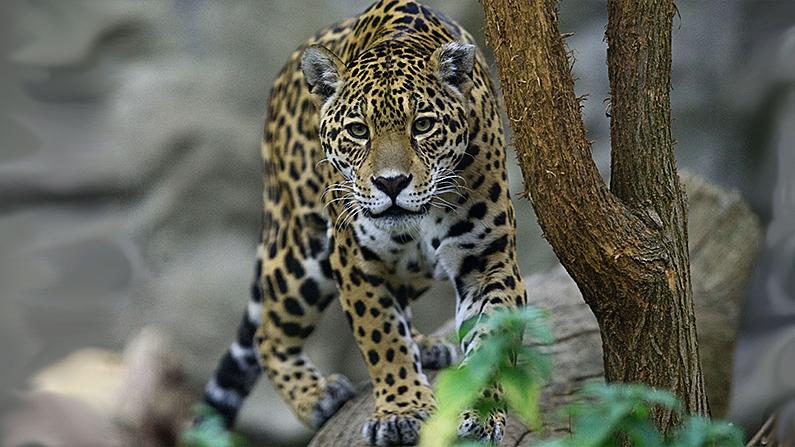In July, a 3-year-old male jaguar, Valerio, at New Orleans’ Audubon Zoo escaped and fatally mauled four trapped alpacas, one emu and one fox who were held in other displays. Valerio bit a hole in steel fencing and zoo officials vowed to install stronger materials.
According to Fear of the Animal Plant: the Hidden History of Animal Resistance by Jason Hribal (Counterpunch and AK Press), such animal escapes occur regularly and are not always publicized. Between 1995 and 2000, for example, there were 35 escapes at the Los Angeles Zoo alone, writes Hribal. Reasons given by zoo officials for the escapes, when they make the news, lean toward “animals will be animals.” For example, Audubon Zoo officials blamed “territorial disputes” for Valerio’s escape which hardly explains the mauling of other species.
Compared to other zoo and circus animals, Valerio the jaguar was “lucky.” Had he killed humans he could have met the fate of Topsy the elephant who was electrocuted in front of 1,500 ebullient onlookers for the crime of killing three handlers, one of whom was sadistic.
The zoo, circus and other animal entertainment industries contend that animals who escape are just being animals and not enacting premeditated escapes. Yet stories abound in Hribal’s book that suggest otherwise. Siabu, Sara and Busar, orangutans at the Chafee Zoo in Fresno “spent weeks, maybe months, unraveling a small section of the nylon netting that surrounded their enclosure” until “one of them was finally able to push his body through the hole and make it outside,” says the book.
Kumang, an orangutan at the San Diego Zoo learned how to ground a hot wire to escape. “She'll take sticks and piece of wood and lean them up against the wire so that it is grounded,” explained a trainer. “Then she pulls herself up by using the porcelain insulators on the wire as hand-holds. Before mastering electricity, Kumang had enlisted another animal to hold a broom handle to support her while she climbed a wall. In another example, a gorilla traverses a huge moat to escape.
The first blow to the “animals are just being animals” theory is the passion and ingenuity they display to escape incarceration detailed in the books such as the primate who learns to pick locks and orangutans who employ a crowbar and screwdriver to escape. But the second blow to the theory is the specificity with which incarcerated animals target abusers. Who, for example, can forget that Tatiana, a tiger at the San Francisco Zoo, ignored other people and other animals trapped in cages to locate and attack the very three people who admitted they were harassing her in 2011?
Time and time again Fear of the Animal Plant recounts elephants specifically retaliating against abusive trainers, sparing everyone else around them. “Significantly, zoos and circuses will on occasion admit to this fact: that the relations between animal handlers and elephants are primarily antagonistic, coercive and, often, violent,” Hribal writes. In fact one elephant actually grabs the bull hook, the training stick “meant to inflict pain and submission,” by trainers and used it in an attack.
Zoos are not alone in this abuse writes Hribal who also exposes the suppliers/poachers of animals from the wild who provide animals to institutions and for special events. Hollywood is also guilty. Buddha, an orangutan who starred in Clint Eastwood’s Any Which Way You Can was beaten to death with a cane and an ax by a trainer for eating a donut.
Even animal advocates may be shocked at the dedication and volition with which animals respond to incarceration detailed in Hribal’s book. But a riveting introduction by Counterpunch editor Jeffery St. Clair shows that as late as the 1700s, animals were indeed thought capable of free will and premeditation. When they were involved in misdeeds, they were given trials, lawyers and allowed to have character witnesses testify on their behalf.
As for Valerio, zoo officials hope by now the public has forgotten about his “territorial” inspired escape––until the next one happens.
Martha Rosenberg is author of the award-cited food exposé “Born With a Junk Food Deficiency,” distributed by Random House. A nationally known muckraker, she has lectured at the university and medical school level and appeared on radio and television.




